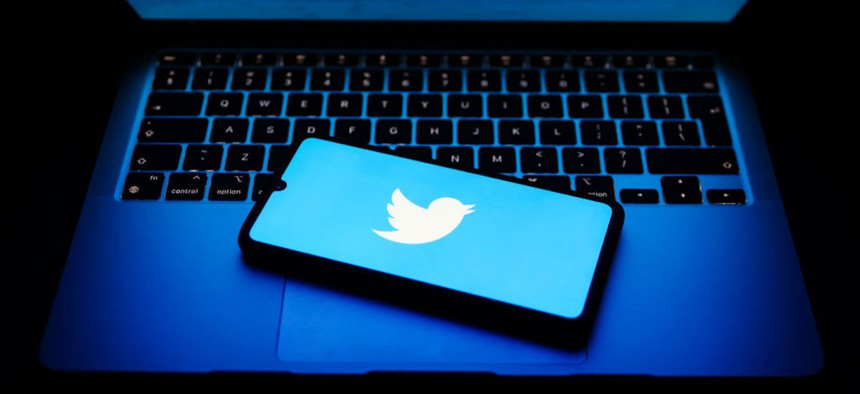Twitter turmoil prompts agencies to plan for social media upsets

Photo by Jakub Porzycki/NurPhoto via Getty Images
Agencies must find ways to adapt to changes in Twitter’s operations to ensure residents still receive the information they need, experts say.
Since 2006, government agencies have relied on Twitter to send real-time information to residents during emergencies such as natural disasters or active shooter events.
But following Elon Musk’s acquisition of Twitter in October 2022, the once reliable app has undergone drastic changes.
Late last year, accounts for government institutions were issued gray check marks, Twitter announced. In early 2023, Musk curtailed free access to the platform’s API, which had allowed users, such as National Weather Service, to send scheduled or automated tweets through a non-Twitter program. Then starting in April, verified user accounts were stripped of their once-coveted blue checkmarks.
The Virginia Department of Emergency Management is one such user, which previously had the blue checkmark before Musk implemented the highly contested changes to the app’s verification system.
“The good news for us is that we have spent a lot of time, even before getting the verification check mark … relationship building with our followers, letting them know that we are the trusted source of emergency information in the Commonwealth of Virginia,” VDEM Deputy Director of Communications Jason Elmore said.
Promoting the agency’s social media handles using press releases, community events, business cards, email signatures and other methods, Elmore said, has helped VDEM establish the reputation of its official accounts among residents.
Megan Duncan, social media expert and assistant professor in the Virginia Tech School of Communication, said agencies that lack an engaged follower base are vulnerable to being impersonated. For instance, individuals with revenge to exact—or simply, just time to fill—could take advantage of the Twitter turmoil to create accounts claiming to be legitimate government agencies. A parody profile could even issue a false Amber Alert, subjecting an undeserving victim to investigation or harassment, she said.
In April, for example, a fake Twitter presence claimed to be the official New York City account, but the actual NYC government Twitter account was quick to respond, citing its gray checkmark as proof. Still, Duncan cautioned against engaging with pranksters.
“Are you going to get into an argument with someone … with clearly bad intentions that just wants a laugh? Are you accidentally going to give them meme material just because you’re feeling defensive?” she asked. Elmore, who is also the vice president of the National Information Officers Association, said smaller agencies are especially vulnerable to being parodied by fake accounts that share false information.
Instead of adding fuel to the fire, government agencies can help residents identify the right accounts to follow by promoting their profiles on government sites or newsletters. Agencies should also offer email or text alerts, Elmore said.
As agencies navigate the changing Twitter landscape, they should also establish a communications plan—including how to respond to impersonators and manage potential verification challenges, Duncan said. Agencies should explain to their residents why it’s important to check if they are engaging with the correct accounts.
“There’s a lot of people who don’t know about all these changes on Twitter, so communicating to them that there’s a renewed need for them to verify institutional safety information that comes from Twitter is important,” Duncan said.
Ultimately, agencies must consider whether adapting to the platform’s frequent changes—and the resulting consequences—is even worth maintaining an account, Duncan said. Last week, the New York Metropolitan Transportation Authority, which has more than 13 million followers, announced it would stop issuing transit alerts, such as service outages and delays, from its Twitter account. “Twitter is no longer reliable for providing the consistent updates riders expect,” the agency said in an April 27 tweet.
“Where is the point in which we’re going to say, ‘This is no longer benefiting our institution to have a social media account that is open to so many opportunities for harm?’” Duncan asked. “Organizations need to rethink and set boundaries now.”
Update: On May 2, Twitter announced verified government agencies or publicly owned services will regain free access to the app’s API for “critical purposes” such as sending weather alerts, transport updates and emergency notifications, the company said in a tweet.






